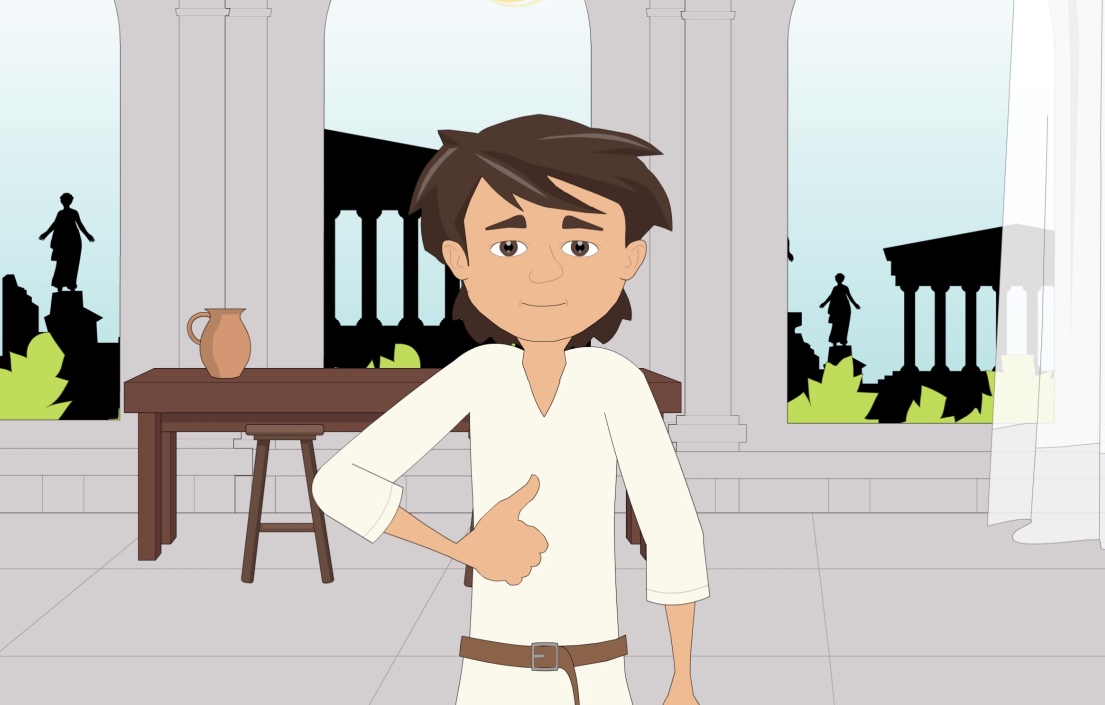Our redeveloped Greek curriculum is now available for purchase!
An introduction:
A sample from the course:
This product is now available for self study. For more information about its use and pricing as classroom curriculum, write us at support@biblicallanguagecenter.com.
What is the Living Koine Greek curriculum?
five principles upon which the curriculum is based
Ancient conversation manuals
The curriculum is based on authentic material from conversation manuals used in the Greco-Roman world to learn language.
Language-task oriented
Just like learning a real language, the curriculum is focused on equipping students to achieve language tasks rather than memorize paradigms.

Continuous narrative story
To engage students and get them comfortable in discourse, the curriculum is tied together by a continuous, cohesive narrative story.
A lot of audio/video material
We learn best by seeing and hearing a language in action. The curriculum has loads of cartoons and audio/visual content integrated into the homework.

Greek New Testament
Although the curriculum’s goal is to teach Koine Greek (not just one text), the language gained through the four principles outlined above leads in to reading New Testament texts.


Based on Greco-Roman conversation manuals
The material is based on ancient Greco-Roman conversation manuals and is thus geared towards developing authentic fluency⧸proficiency. Because these conversation manuals were actually used in school contexts in the ancient world for those wanting to learn Greek, they cover some of the most necessary language-learning material for a beginner in an authentic way.
Focused on language tasks/situations
Each unit is centered around a particular language task, scene, or situation (e.g., going to school, meeting someone new, throwing a dinner party). Rather than memorizing long lists of paradigms and abstract vocabulary lists, the grammar (i.e., morphology, syntax) and vocabulary are taught through these linguistic tasks in a natural and authentic ancient context.


Centered around continuous narrative story
The curriculum is tied together by a continuous, cohesive narrative story that progresses with the students through each unit and corresponds to the language tasks and grammar they are learning. In this way, students are able to contextualize what they are learning within the wider context of a larger discourse, which is important for rounding out their language learning.
Packed with audio and video materials
The course is packed heavily with audio/visual material. Besides thousands of pictures (with accompanying audio) for learning the vocabulary and grammar, students watch biweekly cartoons of the narrative story. By the end of the first semester, students will be able to watch and understand a 15-minute cartoon story that ties together most of the vocabulary and grammar.

Leads into reading the Greek New Testament
Learning the vocabulary and grammar associated with the language tasks leads to reading texts from the New Testament. Most of those interested in learning Koine Greek are doing so because they eventually want to read the New Testament. Therefore, even though the curriculum is based on the linguistic scenes outlined in the Greco-Roman conversation manuals, the vocabulary and grammar gained through these linguistic situations will be used as a springboard to read NT texts with a fuller cultural background.



